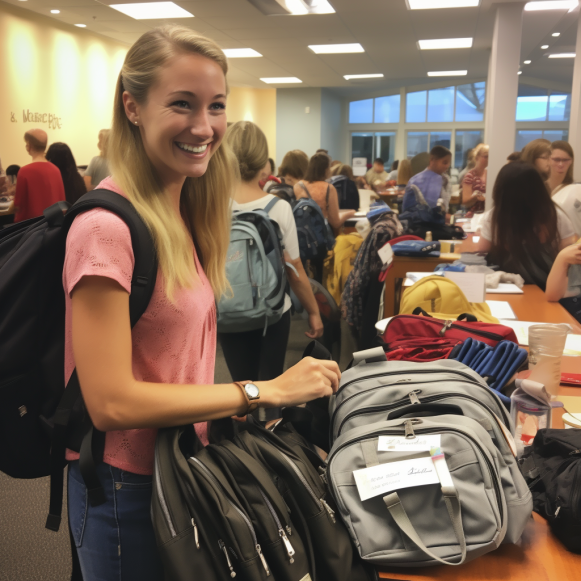How much are you spending on back-to-school shopping for your kid? Is $800 enough?

According to a new Deloitte Consumer Industry Center report, Bay Area parents expect to spend $805 per child on back-to-school shopping for their children, the most of any region.
That figure is 35% higher than the national average of $597, with technology products accounting for the majority of the difference. According to the survey, parents estimate they will spend nearly $700 on computers and other electronic devices alone.
“Despite keeping a close eye on the budget, nearly six in ten parents (across the country) are willing to splurge for the right reasons, such as treating their child, self-expression, or better quality,” according to the report.
Inflation has slowed significantly across the country in recent months. In June, inflation was only 3%, the lowest level since March of 2021. Despite this, high prices in nearly every category have persisted, with school supplies now 24% more expensive than they were two years ago, according to Deloitte.
Back-to-school shopping sprees this year may be the most expensive on record. According to the National Retail Federation, it will reach an all-time high of $41.5 billion, up from $36.9 billion last year and the previous high of $37.1 billion in 2021.
“What we’ve seen in retail overall is that kids and pets are slightly recession proof, in terms of people’s willingness to spend on them,” said Karla Martin, a Deloitte managing director.
However, not everyone has the luxury of doing so. According to a 2021 report from the Public Policy Institute of California, families at the top of the income distribution level earned 11 times more than families at the bottom.
The wealth gap in the Bay Area was even wider in 2020, according to the organization, with those at the top and bottom of the income ladder further apart than anywhere else in the state.
“In general, back-to-school costs magnify inequity,” said Heather Lattimer, dean of San Jose State’s college of education. “(I’m concerned about) the disparity hidden in those overall averages — and the impact that disparity will have in preparing children for success or failure before they even walk through the door.” Some parents can afford to splurge, while others cannot.”
Some teachers have attempted to lighten the load on students and their families. Douglas Spalding, an eighth-grade science teacher in the San Lorenzo Unified School District, gathers free, used binders from a local depot to distribute to his students. Ninety percent of his students at Edendale Middle School are eligible for free or reduced meals, a category commonly used to indicate socioeconomic disadvantage.
“There are families that can’t afford the binder, or the paper, or the pens and pencils,” Spalding explained. “I frequently learn from parents when they ask if it’s okay if they bring the supplies in a week, two weeks, or a month?”
For this reason, Bella Vista Elementary School in San Ramon Valley has taken a different approach to student school supplies. This year, parents were asked to contribute up to $250 to a general supply fund, which teachers like Jacqueline Wehe used to buy materials in bulk for her fifth-grade students.
“I would be heartbroken if one of my students showed up on the first day of school and saw all of their peers with supplies they didn’t have,” Wehe said. “This way, we can get a better deal by buying in bulk — and I think it’s more equitable, too.”
Despite this, Wehe was surprised by how little her money went this year. She bought the same supplies she always did, but was left with only $25 for the rest of the semester, according to Wehe.
“I’m already at my financial limit for the semester,” Wehe said one day before classes started at Bella Vista.






